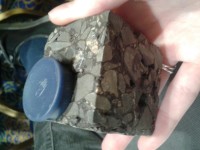Tag archives: engineering
Visiting the most powerful laser in the world
By James Dacey
You might find this surprising, but Romania is one of the main reasons I became a journalist. Back in 2006, having recently graduated with a degree in natural sciences, I spent the summer in the Transylvanian city of Brasov, teaching English to school kids. While there, I was talked into writing a few articles about my experiences for the local tourism magazine, Brasov Visitor. To cut a rambling story short, I had a memorable summer and caught the writing bug. Eventually, I landed a job at Physics World, which enabled me to combine my journalistic leanings with my scientific background.
View all posts by this author | View this author's profile
LGBT engineers share their inspiring experiences
By James Dacey
February in the UK is LGBT History Month, an annual event to promote equality and diversity for the benefit of the public. This year, three engineering organizations have got involved by producing a series of online videos profiling lesbian, gay, bisexual and transgender (LGBT) engineers. According to the Royal Academy of Engineering, InterEngineering and the engineering firm Mott MacDonald, the ‘What’s it Like?’ video series is designed to “inspire prospective engineers who are LGBT, as well as existing engineers who may wish to come out or transition at work”.
The video above features a medley of quotes from people profiled in the films, including Mark McBride-Wright, who is the chair and co-founder of InterEngineering and a gay man. A not-for-profit outfit, InterEngineering seeks a more inclusive profession by running panel discussions and providing career development opportunities for LGBT engineers. “As a profession, we are at the beginning of a journey creating an inclusive industry for everyone and I hope these videos will play a part in attracting LGBT+ students to the engineering industry,” says McBride-Wright.
View all posts by this author | View this author's profile
A horrific nightmare scenario at CERN, surfer wins SUSY bet, and meet the father of the Super Soaker

Surf’s up: Garrett Lisi when he is not winning bets with Nobel laureates. (CC BY-SA 3.0/Cjean42)
By Hamish Johnston
The “nightmare scenario” of particle physics has a new meaning thanks to a bizarre video that appears to have been made by some scientists at CERN. The video seems to have been filmed at night at CERN’s main campus in Geneva and depicts an occult ceremony in which a woman is stabbed. While the video appears to be a spoof and there is no indication that anyone was actually harmed in its making, CERN officials are rightly concerned that such violent scenes were filmed on their premises. “CERN does not condone this type of spoof, which can give rise to misunderstandings about the scientific nature of our work,” a spokesperson told Agence France-Presse.
View all posts by this author | View this author's profile
Something more concrete

A sample of asphalt to which steel-wool fibres have been added, making the material magnetic.
By Margaret Harris at the AAAS Meeting in Washington, DC
Although Thursday’s LIGO result was extremely exciting, I’m afraid I can only spend so much time pondering ripples in the fabric of space–time before I start yearning for something a little more…concrete. Like, well, concrete. And asphalt. And cement. These decidedly ordinary materials were the stars of two of the most fascinating talks I’ve seen at the AAAS meeting here in Washington DC over the past two days.
First up was Erik Schlangen, a civil engineer at the Delft University of Technology in the Netherlands who develops “self-healing” materials. One of his projects (which you can watch him demonstrate in a TED talk) involves mixing porous asphalt with fibres of steel wool. The resulting conglomerate is magnetic (that’s a magnet sticking to it in the photo), which means that microscopic cracks in it can be repaired using induction heating. The heat melts the bitumen in the asphalt, allowing it to re-fuse, but the surrounding aggregate remains relatively cool – meaning that cars can be driven over asphalt road surfaces almost as soon as the repair is complete.
View all posts by this author | View this author's profile
Shorter queues for taxiing planes?

Spinning around: The air flow from the wing of a plane, made visible by using coloured smoke. (Courtesy: NASA)
By Ian Randall
If you’re as impatient as I am, the worst part about flying off for your summer vacation is the interminable hold-up that sometimes occurs right before take-off – waiting for the plane to taxi onto the runway and desperately hoping the in-flight entertainment will kick off soon. But these annoying delays may soon be cut down thanks to Georgios Vatistas and colleagues at Concordia University in Montreal. The team has developed a new mathematical airflow model to help refine the safe separation distances needed between planes during take-off and landing.
As an aeroplane moves along, the lift-generating difference in pressure between the top and bottom surfaces of its wings causes air to flow out from beneath each wing and up around the wing tip. This creates a circular vortex pattern behind each tip (pictured above), with a downwash in-between – forming a turbulent wake that can be hazardous to any craft that passes through it. If large enough, this turbulence can roll the next aircraft, faster than they can resist – leading to a crash.
View all posts by this author | View this author's profile